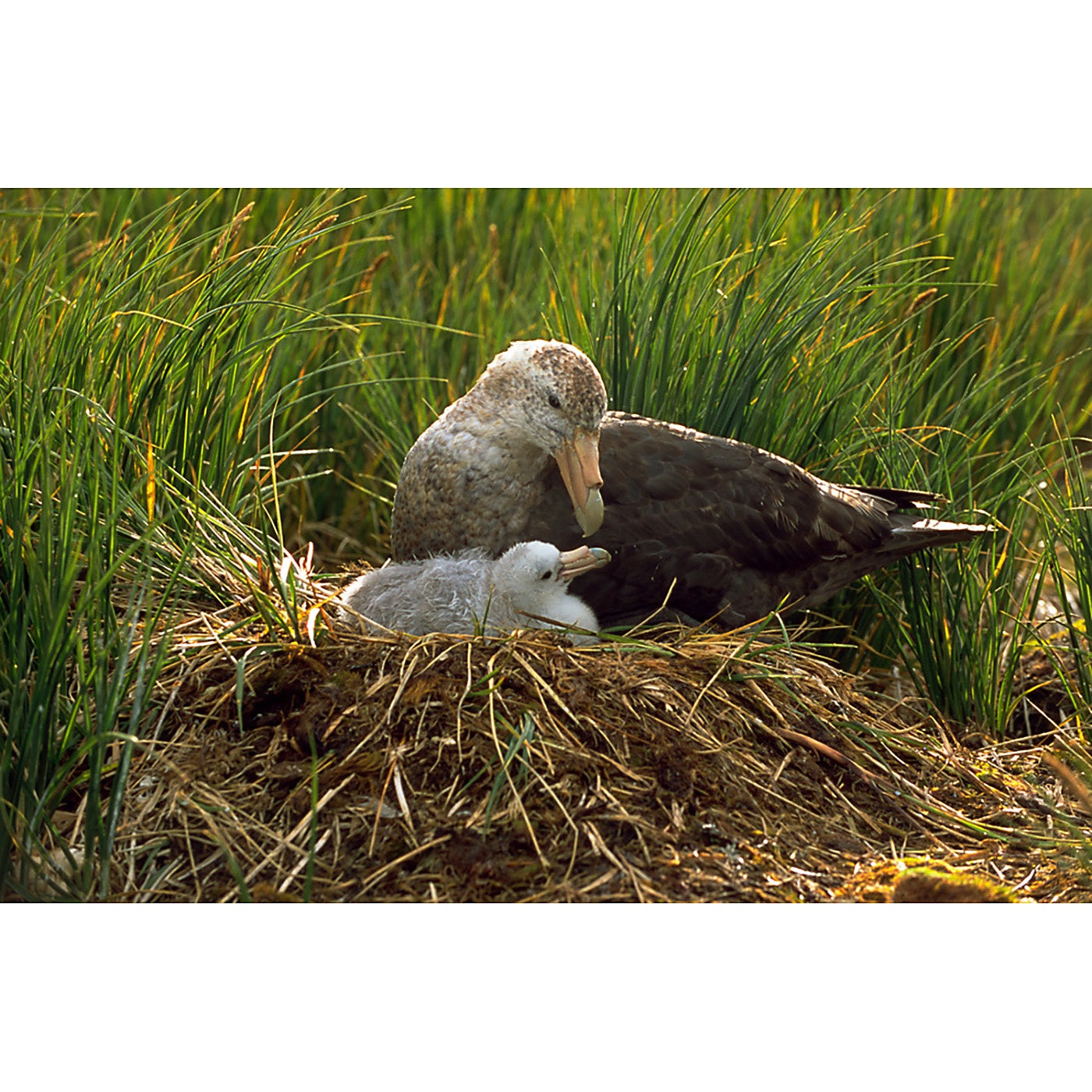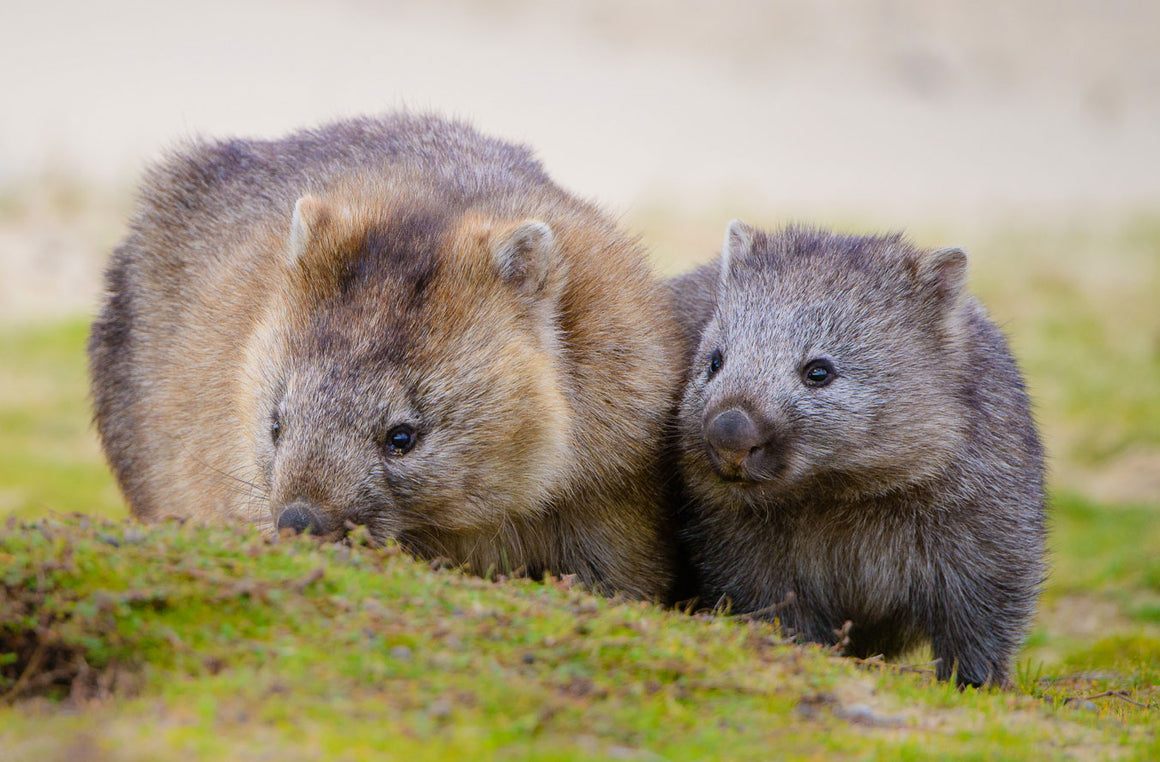Graham Robertson - Southern Giant Petrel and Chick
$160.00
Southern Giant Petrel and Chick
Graham Robertson
There’s an old jungle saying that albatrosses and petrels hark back to the days of Archaeopteryx, a dinosaur-like protobird from the Mesozoic period. Their evolutionary path to the present time might have gone something like this. One day old mama Archaeopteryx instructed her followers to collect dinosaur cytoplasm from the forest floor, mould it into shapes like old mama herself, place in the evolutionary oven and bake it hard for 60 million years. They did, and at the end of the baking period out popped albatrosses and giant petrels! But old mama’s followers wandered off script, they neglected to mix the cytoplasm evenly before baking. Albatrosses got the purest cytoplasm and giant petrels the dregs. This explains why albatrosses and giant petrels, two outwardly similar groups of seabirds, look so different when viewed up close – albatrosses the exemplars of beauty and grace and eminently photogenic, and giant petrels a little hoary headed and rugged around the chops, often covered in the blood and guts of their carrion prey. But they’ve withstood the test of evolutionary time, they’re survivors, so aesthetics shouldn’t be important. Except when it comes to photographic exhibitions.
After a few decades of visiting islands where giant petrels breed, I finally stumbled across one that was pleasing on the eye. This Southern Giant Petrel is shown interacting with its chick on a nest raised above the water table, the nest and its contents cradled by tussock grass sawn off by the wind and backlit by the sun. Photo taken on Annenkov Island, South Georgia.
The Wildlife of South Georgia Island
Graham Robertson is internationally acclaimed research scientist and an accomplished wildlife photographer. He has visited South Georgia Island on a number of occasions throughout his career. Graham’s great passion is the Albatross, and his images of these and other extraordinary creatures of South Georgia Island reflect his life long efforts to conserve these wonders of nature.
Graham spent the first 14 years of his career with the NSW National Parks and Wildlife Service working as a plant ecologist in western NSW. A bushwalking trip to Tasmania in the early 1980s resulted by chance in a trip to Albatross Island (Bass Strait), which proved to be a career changing experience. Research trips to Macquarie Island and other seabird breeding sites around the world followed to acquire experience, which in 1988 led to his appointment by the Australian Antarctic Division as overwintering biologist to Mawson station to study emperor penguins.
By the time of his return from Antarctica the impact of longline fisheries on global albatross populations had gained international attention. That provided an opportunity for Graham to work at the interface between primary industry (fisheries) and conservation biology, in an attempt to modify the entrenched behaviours and practices of longline fishing industries to reduce their impacts on seabirds. From 1995 until his retirement from the Antarctic Division in 2014 his research included studies of albatross-fisheries interactions and, especially, the development of seabird-friendly fishing gears and practices for various longline fisheries around the world.
In 2004 he was awarded a Fellowship in Marine Conservation by the Pew Charitable Trusts (USA) for research on the Spanish system of longline fishing for Patagonian toothfish. He is the recipient of two Australian Antarctic medals, the first (in 1989) for overwintering studies of emperor penguins and the second (2012) for contributions to seabird conservation in fisheries.
The photographs in this exhibition were taken on two trips to South Georgia, the first a research trip and the second a private trip made specifically to capture the courtship dance of the wandering albatross, one of the most iconic seabirds in the world. The intention was to use the photographs of wanderers in full display to attract the attention of the general public to the threats posed by industrial fisheries to seabird conservation in general. This exhibition will be the first time that Graham has displayed these images in a public exhibition.
Please note; Prints are made to order. Please allow 10-15 business days for your delivery.


